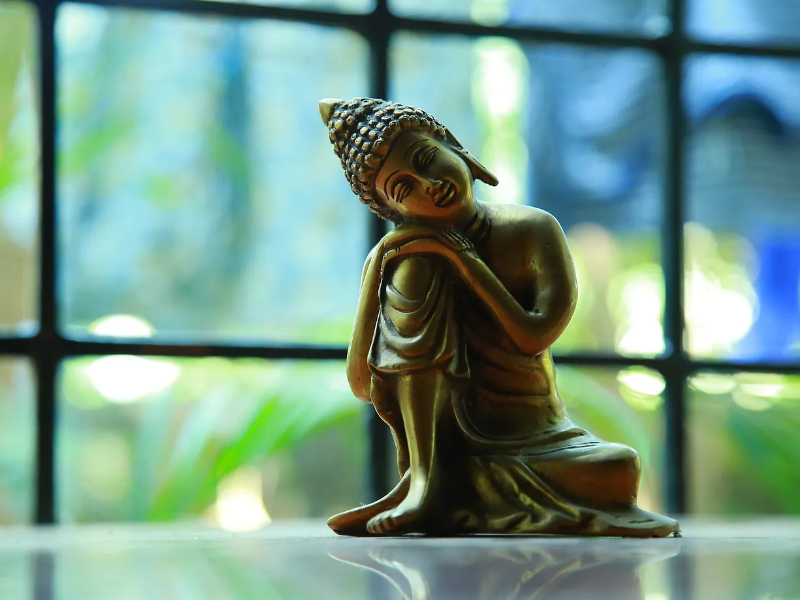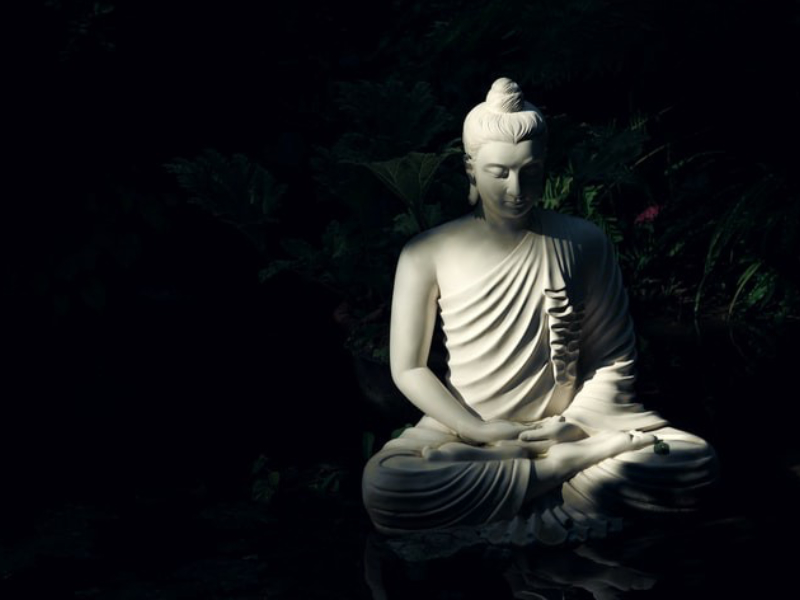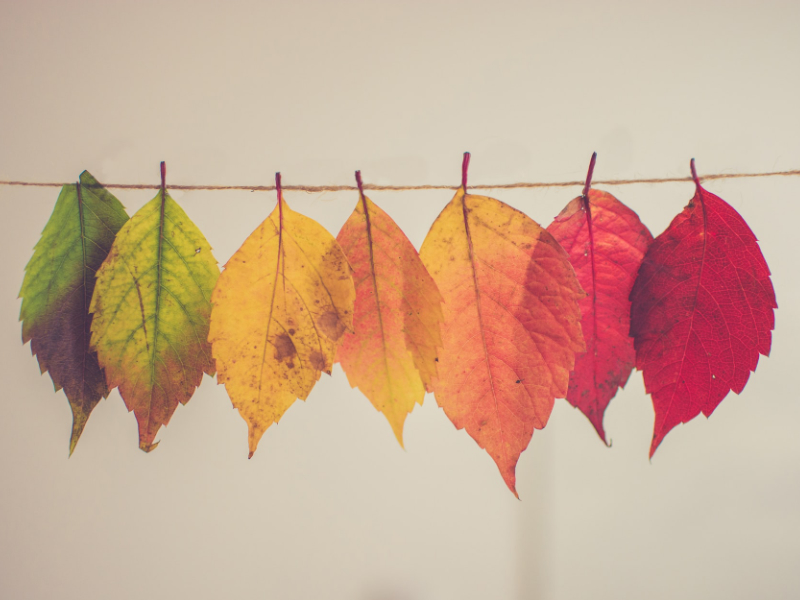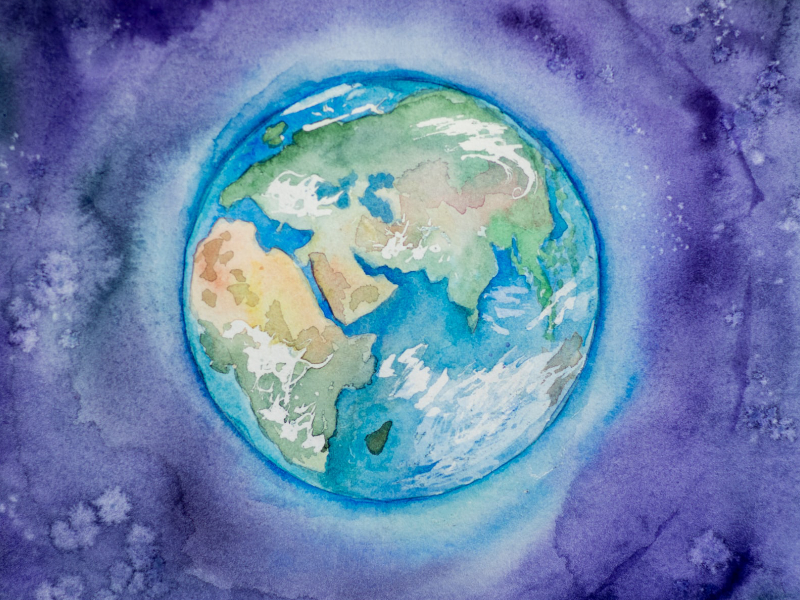Wisdom Without Beginning or End
– Reviewing The Noble Eightfold Path –

“When we practice, wisdom grows. When we don’t, wisdom wanes.” – The Buddha
Last episode, we finished exploring the final dimension of the Buddha’s Noble Eightfold Path—concentration. Because, however, there really is no end to this Path, because it is a cycle that repeats itself, I thought I’d take the space today to take another cycle around this wheel of wisdom, to recap what we learned and hopefully maintain some momentum.
WISDOM | THE NOBLE EIGHTFOLD PATH
Okay, well, first things first, it’s important to remember that the Eightfold Path can’t be separated from the Four Noble Truths. Because, it is the Four Noble Truths that holds the entire intention and motivation underlying the Buddha’s philosophy — to understand the nature of suffering in order to bring peace to our hearts and minds.
So, to quickly recap: the four noble truths are 1) the truth of dis-ease or suffering, 2) the truth of the cause of this dis-ease, 3) the truth of well-being or the cessation of dis-ease, and 4) the truth of a path that leads away from dis-ease, the truth of a path that leads to peace and freedom — the Noble Eightfold Path.
Again, this isn’t a dogmatic prescription or declaration but rather it is an invitation to look into your own heart and mind to discern for yourself whether this path leads onward to peace and freedom or whether it leads to more suffering.
Now, at the outset, it’s important to keep in mind that the practice and the work we put in is not intellectual. It must be absorbed, applied, and embodied, again and again. We can’t learn it once and then put it down. Wisdom is lived.
So, to help us continually navigate the landscapes of our experience with peace of heart and mind, the Buddha created a kind of training program, which he broke into three sections: 1) training in sila or moral conduct, 2) training in cognition, and 3) training in understanding.
These, as I’ve said before, are not linear. They are interconnected, each of them supporting all the rest, like a wheel, with the eight sub-exercises considered as spokes on that wheel, each a necessary component for the wheel to travel smoothly through the magic and mystery of experience.
Training in moral conduct, though, the first arena of training, is often considered the bedrock, since it’s nearly impossible to develop the other factors without first establishing and expressing a commitment to non-harm. Munindra, a Bengali Buddhist master and one of the most influential vipassana teachers of the twentieth century, said that trying to develop the other factors on the Path without first committing yourself to non-harm is like trying to row a boat across the river without untying from the dock. You can put in all the effort you want, but you won’t go anywhere without sila.
You probably already know this to some extent. You probably know what it feels like to be mentally strained by guilt or remorse. It takes up a lot of space in our minds and can weigh heavy on our hearts. So, to clear up space, the Buddha invited us to ground ourselves in a commitment to non-harm, and to do this over and over again. Whenever we lose touch of this intention and hurt someone with our words or our actions, as we will inevitably do, we can once again make contact with this deep intention within each of us that wishes well to life, to people and creatures, to ourselves. No matter where we are, no matter how lost, we can always find this North Star to guide us back home.
Now, of course, this intention of non-harm is not enough. We also have to put in the effort. We need to practice and develop habits of speech and action that are rooted in sila, otherwise we will just continue to play out our old conditioned habits.
One practice the Buddha suggested, and one I’d like to emphasize again, is to investigate four dimensions of your speech before you open your mouth:
- Is my speech honest?
- Is it grounded in love and harmony?
- Is it skillful — affectionate and timely?
- Is it beneficial — uplifting and supportive?
Now, though sila is foundational, it is also interconnected with our training in understanding. In fact, our commitment to non-harm is rooted in and grows out of understanding the nature of interdependence and karma, of cause and effect. It strengthens as we understand more clearly that we exist and live in relation to the people and world around us. It flowers when we connect our hearts to thoughts and intentions that are rooted in this understanding — thoughts of goodwill, love, compassion, renunciation, and generosity. And it seeds when we see the direct impact of these thoughts and intentions not only on others but also on our own hearts and minds.
Speaking of interdependence, sila is also connected to our training in cognition. Because, when we are strongly rooted in non-harm, our hearts and minds become peaceful, like an undisturbed pond, which allows us not only to see reflections on the surface more clearly but also to see into the depths of the water. Sila, as it grows, then, brings about the potential for clear comprehension and penetrating wisdom.
As I mentioned above, sila is often expressed as the peace of non-remorse. It allows those around us to live with trust and fearlessness. Just consider how it feels to be around those with an unshakeable integrity. You feel warm. You feel safe. You feel at ease. And when we ourselves carry this integrity, when we ourselves are established in goodwill, in non-harm, we too experience this warmth, this safety, this ease in our own hearts and minds.
“If you made a list of people you trusted, would you put your name down?” — NF
So, again, sila sets us up for our training in cognition since it creates an internal sense of peace, a kind of inner calm and clarity that allows us to cultivate and sharpen our mental faculties — effort, mindfulness, and concentration. Only when we establish a sharp mind can we gain the insights and understanding that allow us to navigate life with discerning wisdom.
The first of these cognitive faculties, effort or virya, is difficult but crucial. It is such a difficult aspect of our training because it’s a kind of continuous balancing act, where we’re prone to fall to either side of the spectrum — lethargy and apathy on one end and striving or over effort-ing on the other. It is absolutely crucial, though, because it’s the fuel necessary to take on any endeavor. We can’t do anything or move anywhere without it.
Don’t underestimate this aspect of training. It really is the key to all of our aspirations, including our spiritual aim of peace and freedom. Many of us have the intention to improve ourselves or our lives, to cultivate a virtue, to start a business, change a habit, write a book, or whatever. But very few of us will actually put in the work. That’s because we haven’t cultivated and come to understand this faculty.
So, again, I invite you to continually be aware of the quality of your effort, so you can recalibrate it to match your current circumstances. Are you too tight or too loose?
Are you feeling agitated from over-efforting? Is there sign of struggle, lack, desire, ambition, or judgment? Are you being too self-critical? Are you trapped in the doom of expectation? Do you need to settle back and relax into a more spacious, receptive, and easeful awareness? Do you need to practice some metta or compassion to soften you?
Or are you feeling too loose? Lazy, timid, or spiritless? Do you need to call in some strength, determination, or perseverance? Do you feel stagnant? Do you need to explore your boundaries, play at the edges of your comfort zone, to increase the capacity of your experience and bring some energy to the system? Remember, discomfort isn’t a bad thing. It’s a signal of growth.
We need effort to escape the inertia of our habits. We need courage and strength to expand ourselves. We need energy and perseverance to stick with our aims. We need virya to support us in everything we do. And in the context of the Eightfold Path, we need it most particularly to support us in our cultivation and development of the next cognitive faculty — mindfulness.
Mindfulness, if you remember, is a non-conceptual kind of knowing, a non-conceptual kind of investigation and examination, a coming face to face with experience. Mindfulness meets experience directly, intimately. It holds and embodies the raw data of experience, without putting a story to it, without forcing onto experience our preferences, prejudices, and biases. It is an open, clear, relaxed, and receptive knowing, one without struggle, one that accepts and reflects everything as it is, without the need to grasp it or push away from it.
Without mindfulness, there is no clear seeing, there is no understanding, there is no penetrating wisdom. Without mindfulness, we see and navigate the world through the delusion of independent self existence, the delusion of permanence, the delusion of desire, aversion, and ignorance. We put ourselves at the center of existence, isolated from all the rest, seeking that which brings us pleasure and running away from that which brings us pain and discomfort. Our happiness, then, when we are not mindful, rests entirely on that which is ultimately unsatisfying, changing, and unstable in nature. Without mindfulness, there is no freedom.
So, to align our pursuit of freedom with reality, with the truth of the moment’s experience, the Buddha invited us to establish ourselves in four foundations of mindfulness, a practice he called the “Direct Path to Awakening.” As you may remember, these four foundations are:
- The body
- Feelings
- The mind; mind-states and emotions
- The laws, processes, and ultimate nature of reality;
Again, the Buddha, who isn’t careless or flippant with his words, called this “The Direct Path to Awakening,” so it may be something you want to consider establishing as a formal practice.
But as a simple way to cultivate mindfulness throughout your day, you can also step back at any time and get a general impression of what’s going on in the heart, body, and mind. You can open to the whole system, the entire energetic field. Listen to experience as if it were the song of the cosmos, the song of being. What is the mood, the energy pattern, strength, and frequency? Note the flavor of experience, note its quality. Again, just get a general, non-conceptual impression. Feel into your being, into existence. How do you know anything at all?
Then, after you’ve stepped back, you can go ahead and open to your perception of the experience. Is there a strong emotion in the heart or a predominant sensation in the body? How are you framing and relating to this experience? Maybe just make a soft mental note — restless, unpleasant. This will allow you to take a deeper look at it, to come in closer to examine the secondary shapes of experience, its component parts.
Look closely at each of them. Are there thoughts, words or images in the mind, sensations, and feelings all working together to create the full experience? Where are each of these experienced in the body? What’s the interplay among them? Are thoughts and emotions creating any feedback loops? Is this interplay coloring experience with feelings and sensations? Are these feelings and sensations leading to more thoughts? Explore these thoughts. Explore their content, yes, but also explore them as they’re directly experienced, explore them as a phenomenon. What is a thought? What are they made of? Where are thoughts? Where do they come from and where do they go?
Finally, you can look so closely that you come into direct contact with the ever-changing, interconnected, and selfless nature of experience. There is always only awareness and its ever-changing contents arising and fading, like waves into the ocean. Become the ocean. Stay in that easeful, open, and receptive space of knowing.
From this place, we also need to remember to clearly comprehend what is going on. We need to know what we are up to, why, and whether our thoughts, words, and actions are skillfully and effectively achieving our aim? One way to to do this is to simply ask, “Is this skillful or unskillful?” “Beneficial or not?” “Useful or not?” This, remember, is the active part of our vipassana practice. But it’s important to remember that it only works when we are mindful, not seeing through the lens of desire or aversion, not deluded by ignorance.
Without this element of clear comprehension, there is no path to walk, only chaos. Without it, there is no understanding, and so we can’t discern with wisdom how to navigate our lives.
Finally, to really bring our practice to fruition, we need continuity in our practice of mindfulness. We need concentration, an undistracted and undivided steadiness of mind, to keep us firmly on our path, to keep us mindful and clearly comprehending our experience, actions, and aim.
To support us here, it’s important to remember that concentration comes from a calm and relaxed mind, not from a wanting or over-striving mind. This is tricky, no doubt, because typically when we want to concentrate, we often feel like we need to scrunch up our forehead and really hold our attention tightly around the object of our concentration. But concentration actually works the opposite way. It grows strong when we are able to settle back and simply receive the object effortlessly, with an open hand and mind. So, once again, we see here the importance of applying a balanced effort.
The Burmese teacher Sayadaw U Tejaniya has a useful trick to keep us open, receptive, and clearly comprehending. He invites us to ask ourselves throughout our formal sitting as well as throughout our day, “What’s the attitude in the mind right now?” I also like to frame this as, “What’s the posture in the mind?” By this, I mean, are you leaning into or away from experience? Are you expecting something or trying to make something happen? Are you trying to change or control experience in some way?
Again, we need to open to and recognize clearly our postures and attitudes toward experience. We need to see our mind-states clearly and how they are relating to everything that’s happening. And we need to do this not only on our cushion but throughout our day. This is what will make possible our liberation from suffering. So, try out this simple mantra throughout your day, especially at times when you feel lost or overwhelmed.
I’ve found that when I simply ask “What’s the attitude in the mind right now?” it helps me to let go of some subtle wanting in the mind. If I’m leaning forward or away from experience at all, it helps me to settle back and occupy the moment. So, as you’re driving your car, waiting in line at the store, talking to your kids or partner, eating food, walking somewhere, transitioning tasks, or engaged in any other activity you fill your day with, try asking yourself, “What is the attitude in the mind right now?” And then pay close attention to what happens. See if this helps you to let go of any wanting in the mind, subtle or crude, and keeps you continuously established in your practice of mindfulness. [Remember, calm, calm, calming. Breathing in, smiling. Breathing out, calming.]
Another helpful mantra I carry that helps me to establish this continuity of practice is the phrase, “Be simple and easy,” which I believe stemmed from Munindra, who I mentioned earlier. The practice truly is simple. It’s hard to remember to practice. But the practice itself is simple. There is nothing we’re really doing. Experience is happening. Can we simply be here for it?
Okay, well, that brings us full loop. As we cultivate and balance these three faculties of mind, we will begin to cultivate insights and understanding about ourselves, the world, and our place in it, which will allow us to align our spiritual aim with the dharma, with the truth of the moment’s experience. The stronger our cognitive faculties become, the more clearly we will be able to see the ever-changing, interconnected, and selfless nature of being, and so the more clearly we will be able to live in harmony with this truth. The more we embody the understanding of our selfless interconnected nature, the more we will become living expressions of Love.
In any case, if you haven’t figured this out already, you are a truly awe-inspiring creature.
Until next time,
More Articles
“The Art of Bare Attention”
Today we’re going to talk about the ancient Buddhist practice vipassana, or insight meditation. Now, just to be clear, this is an entirely secular practice. It doesn’t require you to adopt any dogmatic beliefs…
“The Faceless Seer”
How do you hold your love? Do you hold her from stillness, with nowhere to go, with nothing to do? How do you hold your love? Do you hold her with acceptance, with open hands and arms, with unabashed…
“Everything Changes”
It’s no secret everything changes. Your experience this morning isn’t your experience now. Yet how many of us act like we really understand this? How often do we grasp onto the illusion of things…
“The Divine Connection”
How do you hold your love? Do you hold her from stillness, with nowhere to go, with nothing to do? How do you hold your love? Do you hold her with acceptance, with open hands and arms, with unabashed…






